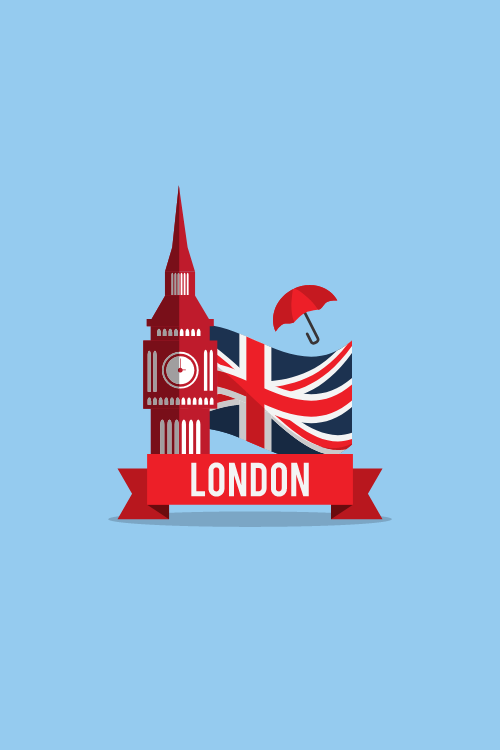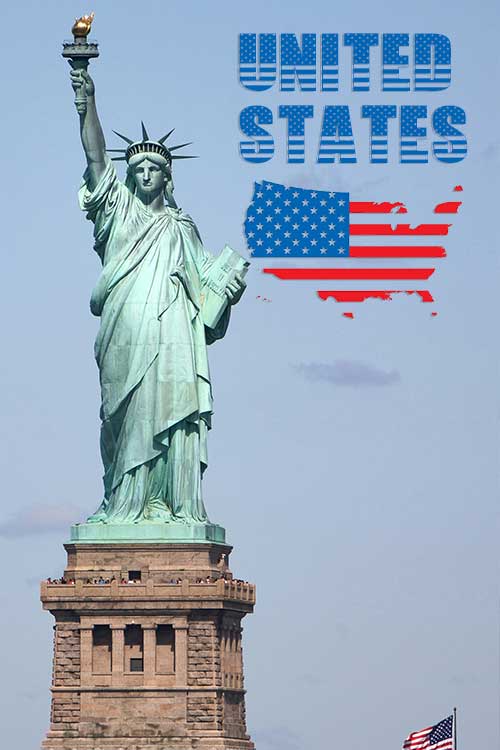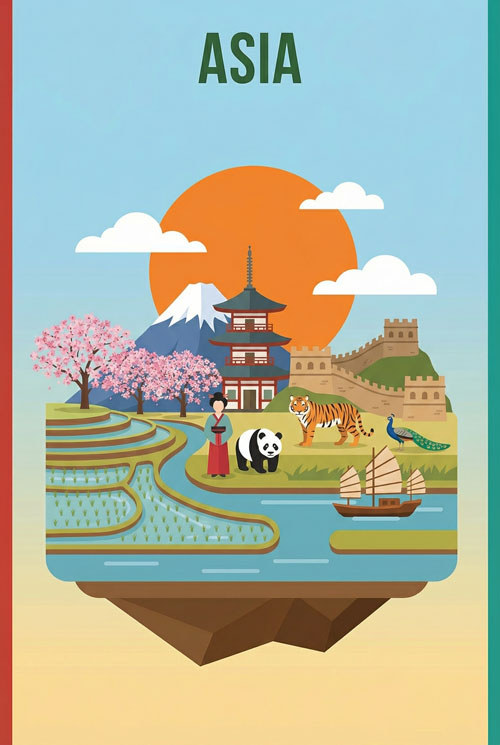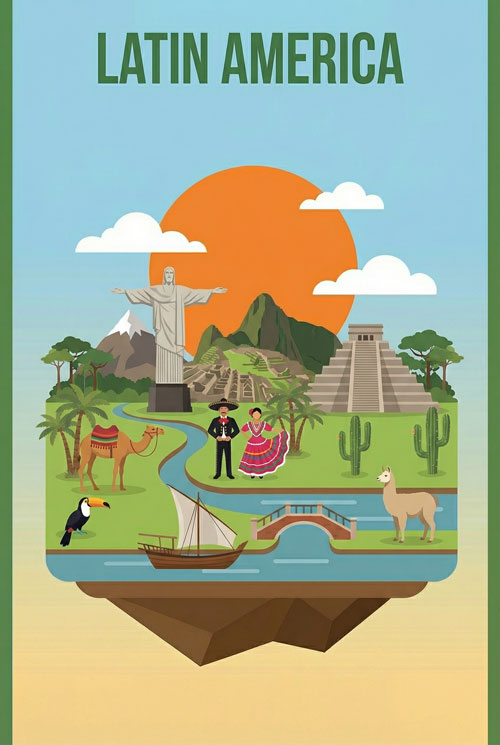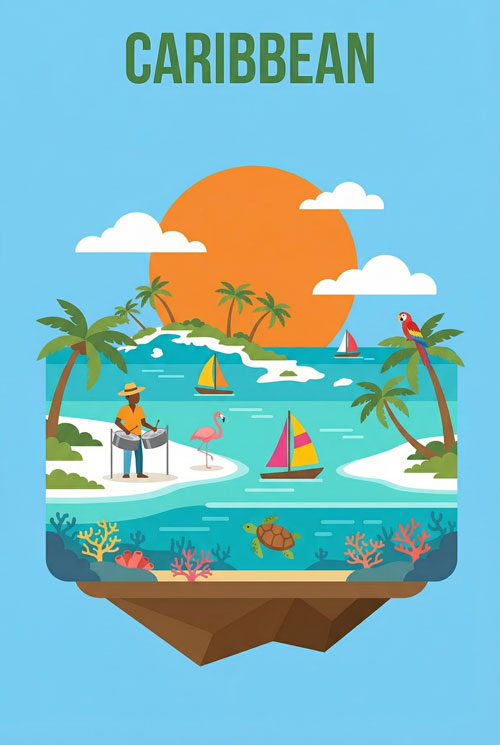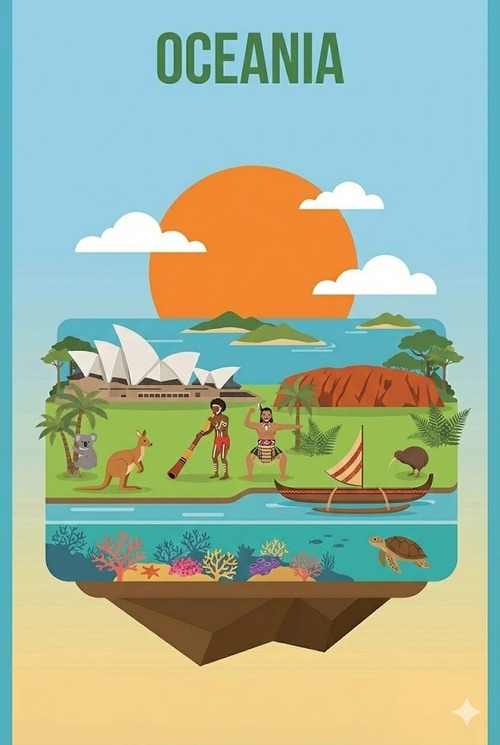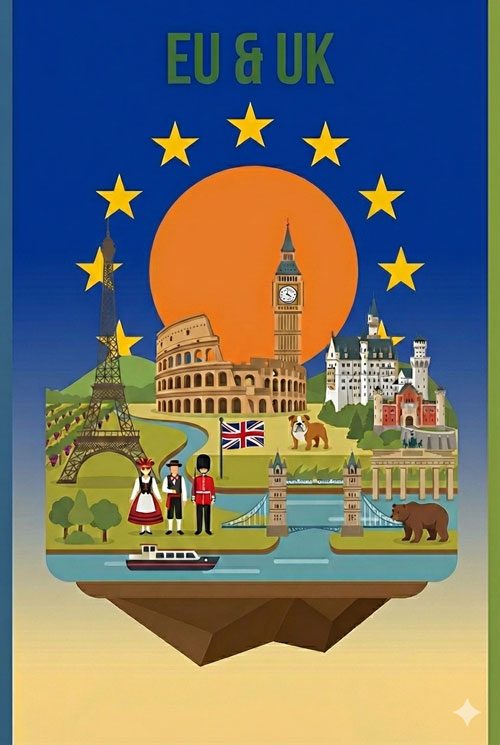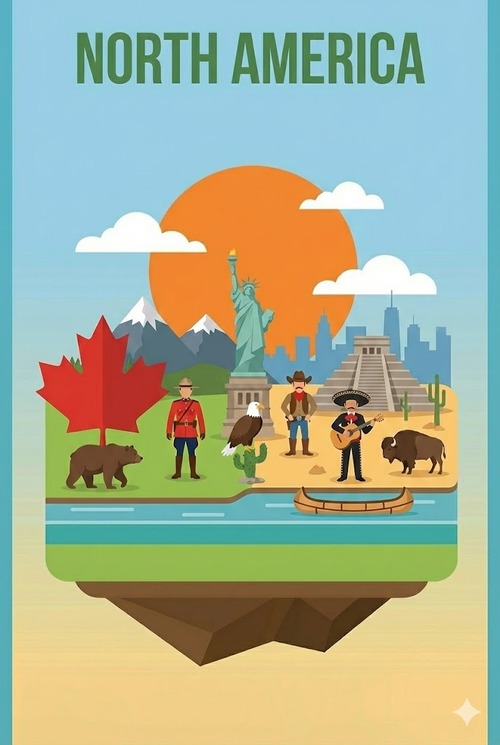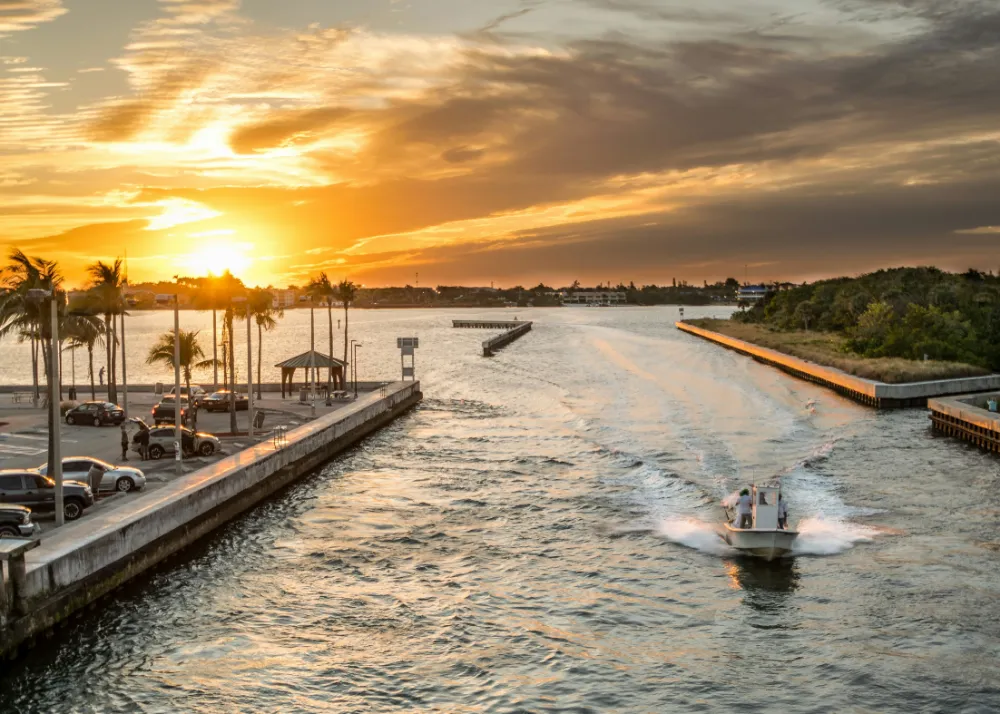Best Time To Visit, eSIM USA
Best Time to Visit Florida? (Weather, Crowds, Prices & Activities)
Figuring out the best time to visit Florida can feel tricky.
You want amazing sunshine, right?
But you also want to avoid huge crowds and find good deals. The ideal time really depends on what you’re looking for. Some months offer beautiful weather with fewer people.
Others are perfect for budget trips or specific fun activities. This guide will help you find your perfect Florida adventure.
We’ll look at Florida month by month and region by region. You’ll get insights into weather, events, and hidden gems.
Unlock Florida’s Climate Secrets for a Perfect Trip
Florida’s weather changes more than you might think. Knowing what to expect can make your vacation much better.
Most of North and Central Florida have a humid subtropical climate. This means hot, humid summers and mild, cooler winters. South Florida, including Miami and the Keys, enjoys a true tropical climate. It’s warm year-round here. The Gulf Stream, a warm ocean current, helps keep the east and southwest coasts milder.
Here’s a quick look at Florida’s seasons:
Spring (March-May): Your Sweet Spot for Sunshine Many say spring is Florida’s golden season. Temperatures are usually in the pleasant 70s to mid-80s Fahrenheit. The humidity is lower than in summer. This often means comfortable weather and fewer crowds than peak times. Just watch out for Spring Break weeks in March and early April. These can bring more people to beaches and theme parks. Nature is blooming, making it great for outdoor fun. You might even catch Epcot’s International Flower & Garden Festival.
Summer (June-August): Embrace the Heat and Fun Summer means hot and humid days. Highs often hit the 90s. Afternoon thunderstorms are common but usually pass quickly. This is a very popular time for families. School is out, and beaches are inviting with very warm ocean waters.
Fall (September-November): Enjoy Milder Days and Festive Fun Fall is another fantastic “shoulder season.” Temperatures cool down to the 70s and 80s. Humidity also drops as the months go by. Crowds usually thin out after Labor Day. Florida hosts many fun fall festivals, like Epcot’s International Food & Wine Festival. Keep in mind that hurricane season continues, especially in September and October.
Winter (December-February): Find Your Warm Winter Escape Florida boasts the mildest winters in the mainland USA. South Florida sees the best of this. Daytime highs there often reach the upper 70s. This makes it a haven for people escaping colder northern climates. North Florida can be much cooler, sometimes even seeing frost. Theme parks are often less crowded, except around Christmas and New Year’s. December is often one of Florida’s driest months. This is great news for your outdoor plans.
Here’s a simple seasonal overview:
| Season | Typical Weather Summary (°F, Humidity, Rainfall) | Avg. Crowds (Low, Med, High) | Avg. Prices (Low, Med, High) | Key Highlights/Activities |
|---|---|---|---|---|
| Spring (Mar-May) | Mid 70s-Mid 80s, Moderate Humidity, Moderate Rainfall (increasing late spring) | Med (High during Spring Break) | Med (High during Spring Break) | Pleasant weather, Wildflowers, Outdoor activities, Epcot Flower & Garden Fest, Baseball Spring Training |
| Summer (Jun-Aug) | High 80s-Mid 90s, High Humidity, High Rainfall (afternoon showers) | High | High | Beach vacations, Warm ocean waters, Water parks, Family travel |
| Fall (Sep-Nov) | Mid 70s-Mid 80s, Moderate Humidity (decreasing), Moderate Rainfall (decreasing) | Med (Low after Labor Day) | Med (Low after Labor Day) | Milder weather, Fall festivals, Epcot Food & Wine Fest, Wildlife viewing, Fewer crowds (beware early fall hurricane risk) |
| Winter (Dec-Feb) | North: 40s-60s, Central: 50s-70s, South: 60s-70s. Low Humidity, Low Rainfall. | Med (High during Holidays) | Med (High during Holidays) | Mild weather (especially South), Manatee viewing, Holiday events, Fewer theme park crowds (non-holiday) |
Understanding Hurricane Season Helps You Plan Better Florida’s hurricane season officially runs from June 1 to November 30. The busiest time for storms is usually August through October. September has historically been the most active month. Storms can affect different coastal areas. Not every storm impacts the whole state. If you travel during this time, travel insurance is a very good idea. Monitor weather forecasts closely. Flexible booking options can also give you peace of mind. A direct hit is not a daily worry. But being prepared is smart. It helps you enjoy the lower prices and thinner crowds of the fall shoulder season. Understanding the real risks allows you to make informed choices. You don’t have to avoid half the year!
Know About Florida’s Rainy Season Florida’s main rainy season is generally from May through October. Expect afternoon thundershowers. They can be heavy but are often short, maybe an hour or two. Plan your outdoor fun for the mornings. Have some backup indoor activities for afternoons. This way, a little rain won’t spoil your day.
Shoulder seasons like spring and fall are often highlighted as ideal. You get great weather, fewer people, and often lower prices. Spring is perfect for festivals like Epcot’s Flower & Garden Festival. You can also see beautiful wildflowers in state parks. Fall brings the Epcot Food & Wine Festival. It’s also a comfy time to explore the Everglades. These specific details make these seasons even more tempting.
This “Invisible” SIM Card is Saving Ordinary Travellers Hundreds on International Trips
You see those travelers glide through airport arrivals – calm, internet connected, already booking their ride-share while others are frantically searching for Wi-Fi or queuing at chaotic phone kiosks…
What’s their secret?
When you travel overseas you’re either paying insanely high data-roaming fees from your home carrier or frantically hunting down some local SIM card kiosk the second you land, wasting precious vacation time just trying to get your phone working.
One leaves you with a bill that leaves a sour taste in your mouth after a great trip. The other eats into your actual holiday, causing stress and hassle when you should be exploring.
But what if I told you that ordinary travelers just like you have figured out a way to completely bypass this frustrating experience?
They’re using something most travelers don’t even know exists… a kind of “invisible” SIM card technology that you likely already have on your phone right now.
And it’s allowing them to tap into super-cheap, high-speed data anywhere in the world… without swapping cards, without visiting a store, and without getting ripped off.
It’s called an eSIM.
And eSIM4.com makes getting one simple.
Here’s how it works:
- Step 1: Go to eSIM4.com.
- Step 2: You pick your destination, choose a data plan.
- Step 3: We send you a simple QR code. You scan it with your phone’s camera.
Your new travel SIM is installed in under 3 minutes!
The moment your plane’s wheels hit the tarmac overseas? Your phone instantly connects to a fast, local network.
No queues. No fumbling with tiny plastic chips. No nasty bill shock.
Just seamless, affordable data letting you use Google Maps, WhatsApp, Uber, Instagram… whatever you need… right away.
This is how travel is supposed to work. And it’s saving people like you hundreds of dollars on a single trip.
Stop letting the big phone companies treat your travel budget like their personal ATM. Stop wasting your valuable vacation time being disconnected or stressed.
Join the smart travelers who’ve already made the switch.
CLICK HERE TO GET STARTEDYour Best Overall Times to Visit Florida
Let’s get to the big picture. When should you go?
For Amazing Weather and Fewer People (The Sweet Spots):
- Spring (March-May): Aim to travel outside of the main Spring Break weeks. The weather is usually warm and pleasant. Humidity is manageable. North Florida is especially lovely in spring. May starts to get warmer.
- Fall (Late September-November): This window offers milder days and less humidity. This is especially true from October on. Crowds are usually smaller after summer. November brings cooler, more stable weather.
For Saving Money (Maximum Value):
- Late April to Early June: You can find a good mix of nice weather before summer’s peak heat. Prices for places to stay are often better. Crowds are smaller than in peak season.
- September (after Labor Day) to Mid-November: Hotel rates often drop. Crowds thin out a lot. Early September can be great for finding deals.
- January to Early February (After the Holiday Rush): Once the Christmas and New Year’s crowds leave, prices can dip. Attractions are often less busy too. To get the best value, try to avoid big holiday periods. Christmas, New Year’s, Easter, and Thanksgiving see price jumps. Peak Spring Break also means higher costs.
For the Lowest Prices (When You Can Find Real Steals): This mostly lines up with budget travel times. You might need to accept some trade-offs for the absolute lowest prices. This could mean hotter, more humid weather (late spring/early fall). Or, it could mean dealing with hurricane season uncertainty.
Even within these “best” times, there are small changes. Early spring can still have Spring Break crowds. Late spring gets warmer and more humid. Early fall can be hot and has a higher hurricane risk. Late fall is generally cooler with less storm risk. Knowing these details helps you fine-tune your plans.
Staying connected while you travel can make things much smoother. Whether you’re checking maps, booking a last-minute tour, or sharing photos, reliable data is a must. For hassle-free internet access as soon as you arrive, you might want to look into an eSIM. Companies like eSIM4.com offer plans for many countries. This means you can get online without hunting for a local SIM card. You can learn more about Effortless Connectivity: Your Guide to International Travel Data to see if it’s a good fit for you.
Connecting on the Go: eSIM vs. Physical SIM for Your Florida Trip
When you’re planning your travel communications, you’ll likely choose between an eSIM and a traditional physical SIM card. Both have their pluses and minuses.
What’s an eSIM? An eSIM is an embedded SIM card. It’s a small chip already in your phone. You don’t need to insert anything. You activate it digitally, often by scanning a QR code or through an app.
eSIM Advantages:
- Super Convenient: You can buy and set up your data plan before you even leave home. It often connects automatically when you arrive.
- No Swapping: You don’t have to mess with tiny physical cards. You won’t lose your home SIM card.
- Multiple Plans: Newer phones can store multiple eSIM profiles. This is handy if you travel a lot.
- App Management: Companies like eSIM4 allow you to manage your data, top up, and even get support through their app.
eSIM Considerations:
- Device Compatibility: eSIMs work mainly with newer smartphone models. Check if your phone supports eSIM.
- Availability: While growing fast, not every local carrier in every country offers extensive eSIM options yet. However, global providers cover many destinations.
What About Physical SIM Cards? These are the traditional plastic cards you insert into your phone.
Physical SIM Advantages:
- Works in Most Phones: Almost any unlocked phone can use a physical SIM.
- Widely Available: You can find them in many stores worldwide.
- Potentially Cheaper for Long Stays: If you’re staying in one country for a very long time, a local long-term plan on a physical SIM might sometimes be more economical.
Physical SIM Considerations:
- Hassle Factor: You need to find a store to buy one upon arrival. Swapping SIMs can be fiddly.
- Language Barriers: Buying a local SIM might involve navigating language differences.
- Registration: Some countries require registration, which can take time.
Which is Right for You?
- Choose an eSIM if: You value convenience and want data ready when you land. You travel frequently or to multiple destinations. You have a compatible phone and prefer managing things digitally. An eSIM can make your trip smoother, especially for things like Navigating Abroad: Why Reliable Mobile Data is a Must.
- Stick with a Physical SIM if: Your phone isn’t eSIM-compatible. You’re on an extremely tight budget and willing to shop around locally upon arrival. Or if you’re planning a very extended stay in a single country where a specific local long-term physical SIM plan is better.
Understanding your options, like those discussed in an “eSIM vs Physical SIM: Which is Right for Your Next Trip?” guide, can help you make the best choice for your travel style.
Find Your Perfect Florida Time by Activity
What do you love to do? Florida has something for everyone.
For Beach Lovers: Sun, Sand, and Waves Await Florida’s long coastline means diverse beach experiences. Your best time depends on what you want.
- Gulf Coast vs. Atlantic Coast:
- Gulf Coast: Think white, soft sand. The water is usually calmer, clearer, and warmer. This makes it great for families with young kids and for shelling. November to April is often best for Gulf Coast beach weather. Summer Gulf waters can get very warm!
- Atlantic Coast: Here, the sand is often golden or browner and more packed. The Atlantic has bigger waves. This is better for surfing. Atlantic waters are usually a bit cooler than the Gulf, which can be refreshing in summer.
- Water Clarity: Generally, the water is clearest from November to May. Northwest Florida (the Panhandle) and Southwest Florida beaches often boast very clear water.
- Best Months for Beaches:
- Sunbathing & Relaxing: November through April offers comfy temperatures statewide. For the warmest water in winter, head to South Florida beaches (like Miami or Naples).
- Swimming: The ocean is usually warm enough from April to October across most of Florida.
- Avoiding Crowds: May and October can be wonderful for quiet beaches, especially in South Florida. Going midweek helps too. Look for lesser-known gems like Sanibel Island or St. George Island.
For Theme Park Fans (Mainly Orlando): Maximize Your Magic Timing is everything for a great theme park visit. You want to balance crowds and weather.
- Least Crowded Times: January and February (after New Year’s, before Spring Break) often see fewer people. September, after schools are back, also tends to be quieter. Weekdays (especially Tuesday-Thursday) are usually less crowded than weekends. This can be a huge win for your patience.
- Times to Avoid (If You Dislike Crowds): Christmas and New Year’s are extremely busy. Spring Break (mid-March to mid-April) brings big crowds. Summer months (June-August) are also very packed.
- Weather Matters: January and February have mild temperatures, often in the low 70s°F. This is comfortable for walking around parks. Spring and Fall also offer pleasant weather. Summer is hot and humid with daily rain chances.
- Special Events Impact: Epcot’s festivals (Flower & Garden, Food & Wine) draw big crowds to that park. This might mean other parks are a bit less busy on those days. Halloween events also change crowd patterns in the fall.
For Nature & Wildlife Lovers: Explore Florida’s Wild Side Florida’s amazing ecosystems offer incredible wildlife viewing. The best times vary.
- Everglades National Park: The drier winter months (December-January) are often best. Lower water levels gather wildlife, making animals easier to see. There are fewer mosquitoes too! Spring is also good.
- Manatee Viewing: Winter (December-February) is prime manatee season. As waters cool, these gentle giants gather in warmer freshwater springs. Check out Blue Spring State Park or Crystal River.
- Birding: Spring (March-May) and Fall (September-November) are peak migration times. You can see many different bird species.
- Sea Turtle Nesting: The main nesting season is May through October. You can’t disturb them, but some areas offer permitted night walks with conservation groups.
- Dolphin Spotting: You can often see dolphins year-round. Late May to August is considered a good period by some.
- Hiking & Exploring: Fall (September-November) has pleasant temperatures for trails. Spring (March-May) is also great, with wildflowers blooming. Cooler months (December-April) generally mean fewer pesky mosquitoes.
For Festival Goers: Join the Celebration Florida has a packed calendar of fun events. Check the month-by-month guide below for more! Some big ones include:
- Art Basel Miami Beach (December)
- Gasparilla Pirate Fest in Tampa (January)
- South Beach Wine & Food Festival (February)
- Epcot’s festivals (Spring-Summer & Fall)
- Fantasy Fest in Key West (October)
Here are some examples of major annual events:
| Month | Event Name | Primary Location(s) | Brief Description & Type |
|---|---|---|---|
| January | Gasparilla Pirate Festival | Tampa | Large pirate-themed parade and street festival; Cultural, Family |
| Art Deco Weekend | Miami Beach | Celebration of Art Deco architecture, music; Cultural, Arts | |
| February | South Beach Wine & Food Festival (SOBEWFF®) | Miami Beach | Premier gourmet gathering with celebrity chefs; Food & Wine |
| Mar-Apr | Epcot Int. Flower & Garden Festival | Orlando (Epcot) | Topiaries, gardens, outdoor kitchens, concerts; Theme Park |
| October | Fantasy Fest | Key West | Lavish 10-day adult costume festival; Cultural, Party |
| December | Art Basel Miami Beach | Miami Beach | Leading international contemporary art fair; Arts |
| Nights of Lights | St. Augustine | City-wide holiday light display; Holiday, Family |
Export to Sheets
For Families (More Than Just Theme Parks): Create Lasting Memories Florida is packed with family fun beyond the big parks.
- Spring (March-May): Mild temperatures are great for outdoor adventures. Think beaches, state parks, and nature walks.
- Fall (September-November): Pleasant weather returns. It’s ideal for hiking, nature reserves, and local fall festivals. Crowds are usually smaller.
- Things to Think About: Try to balance your trip with school holidays. These often mean peak crowds and prices. Shoulder seasons can be a good compromise. Look for resorts with family-friendly pools and kids’ clubs.
For LGBTQ+ Travelers: Find Welcoming Spaces Florida has many destinations and events that welcome LGBTQ+ travelers.
- Pride Month (June): You’ll find Pride celebrations across the state. Key West, Miami Beach, and Orlando host big events. Orlando’s “Gay Days” in June is also popular.
- October: Orlando’s “Come Out With Pride” is another major LGBTQ+ event.
- Key West: This island city is famous for being LGBTQ+ friendly year-round. It has a very welcoming vibe.
When you plan around your interests, remember possible trade-offs. The best time for Everglades wildlife (winter) might mean cooler Gulf waters. If warm swimming is key, spring or fall might be better, but the Everglades could be hotter. Highlighting these helps you decide what’s most important for your trip.
Your Month-by-Month Florida Planner
This is where we get really detailed. Here’s what you can expect each month in North, Central, and South Florida. (Full climate data for all cities and months is extensive. Average temperatures (Fahrenheit) and precipitation (inches) are noted from various climate sources like Wikipedia and U.S. Climate Data. Always check a current forecast before your trip!)
January in Florida: Cool Starts and Southern Sun
- Weather:
- North (Tallahassee): Cool. Highs ~64°F, lows ~40°F. Frost possible. Precip. ~4.4″.
- Central (Orlando): Mild. Highs ~71°F, lows ~49°F. Low rain ~2.4″.
- South (Miami): Warm, sunny. Highs ~76°F, lows ~60°F. Dry ~1.8″. Peak “snowbird” time.
- Events: Gasparilla Pirate Festival (Tampa), Art Deco Weekend (Miami Beach), South Florida Fair.
- Pros: Fewer theme park crowds (after New Year’s). Great South Florida weather. Good for manatee viewing. Often dry.
- Cons: North Florida can be cold. South Florida can be busy with seasonal residents.
- Best For: Budget theme park trips, South Florida beaches, manatee spotting.
February in Florida: Mild Days and Festival Fun
- Weather:
- North: Still cool. Highs ~67°F, lows ~42°F. Precip. ~4.8″.
- Central: Pleasant. Highs ~73°F, lows ~53°F. Moderate rain ~2.8″.
- South: Beautiful. Highs ~78°F, lows ~62°F. Low rain ~2.1″.
- Events: South Beach Wine & Food Festival, Florida State Fair (Tampa), various local festivals.
- Pros: Generally mild weather statewide. Theme parks still less crowded before Spring Break.
- Cons: Can still get cool spells, especially in the north.
- Best For: Food festivals, outdoor activities, exploring cities.
March in Florida: Spring Blooms and Lively Beaches
- Weather:
- North: Warming up. Highs ~74°F, lows ~47°F. Precip. ~5.9″.
- Central: Lovely. Highs ~77°F, lows ~57°F. Moderate rain ~3.8″.
- South: Warm and sunny. Highs ~80°F, lows ~65°F. Moderate rain ~2.7″.
- Events: Epcot Flower & Garden Festival begins, Florida Strawberry Festival (Plant City), Spring Break starts.
- Pros: Beautiful spring weather. Wildflowers blooming. Great for many outdoor activities.
- Cons: Spring Break crowds arrive, especially at beaches and theme parks. Prices can rise.
- Best For: Early month beach trips (before peak Spring Break), garden festivals, baseball Spring Training.
April in Florida: Perfect Spring Days
- Weather:
- North: Very pleasant. Highs ~80°F, lows ~53°F. Precip. ~3.7″.
- Central: Ideal. Highs ~83°F, lows ~60°F. Low rain ~2.6″.
- South: Warm, sunny. Highs ~83°F, lows ~68°F. Moderate rain ~3.2″.
- Events: Epcot Flower & Garden Festival continues, Florida Film Festival (Orlando), SoWal Wine Festival.
- Pros: Excellent weather statewide – warm, not too hot/humid. Good for beaches and theme parks (later in April).
- Cons: Spring Break can linger early in April. Pollen can be high.
- Best For: Beach vacations, theme parks (mid-late April), outdoor festivals, birding.
May in Florida: Summer’s Warm Welcome
- Weather:
- North: Getting warmer. Highs ~87°F, lows ~62°F. Precip. ~3.5″. Rainy season may begin.
- Central: Warm. Highs ~88°F, lows ~68°F. Rain increases ~3.3″.
- South: Hot and humid. Highs ~87°F, lows ~72°F. Rainy season starts ~5.0″.
- Events: Key West Songwriters Festival, various Memorial Day weekend events.
- Pros: Good beach weather. Ocean waters are warm. Fewer crowds than peak summer.
- Cons: Humidity and rain chances increase. Heat builds, especially in the south.
- Best For: Early month beach trips, water activities before summer crowds.
June in Florida: Summer Sunshine and Showers
- Weather:
- North: Hot and humid. Highs ~91°F, lows ~69°F. Wet ~7.7″ (afternoon showers).
- Central: Very hot, humid. Highs ~91°F, lows ~73°F. Very wet ~8.7″.
- South: Hot, tropical. Highs ~89°F, lows ~75°F. Wet ~7.7″. Hurricane season officially begins.
- Events: Miami Fashion Week, St. Pete Pride.
- Pros: Ocean is very warm. Long daylight hours.
- Cons: Very hot and humid. Daily rain is likely. Crowds build as schools let out.
- Best For: Beach days (with indoor breaks), water parks.
July in Florida: Peak Summer Heat
- Weather:
- North: Hottest month. Highs ~92°F, lows ~72°F. Wet ~8.3″.
- Central: Very hot, humid. Highs ~92°F, lows ~74°F. Wet ~7.3″.
- South: Hot, humid. Highs ~90°F, lows ~77°F. Wet ~6.2″.
- Events: Pensacola Beach Air Show, Key West Hemingway Days, Fourth of July events.
- Pros: Warmest ocean temps. Water parks are a blast. Scallop season on parts of Gulf Coast.
- Cons: Oppressive heat and humidity for some. Daily thunderstorms. Theme parks very crowded.
- Best For: Water activities, indoor attractions during midday.
August in Florida: Hot Days and Quieter Endings
- Weather:
- North: Still very hot. Highs ~92°F, lows ~72°F. Wet ~7.3″.
- Central: Very hot, humid. Highs ~92°F, lows ~74°F. Wet ~7.8″.
- South: Hot, humid. Highs ~90°F, lows ~77°F. Wet ~7.0″. Peak hurricane month activity begins.
- Events: Epcot Food & Wine Festival may start late August. Various local events.
- Pros: Water is still very warm. Crowds may lessen towards month’s end as schools start.
- Cons: Still very hot and humid. High rain chances. Peak of hurricane season approaches.
- Best For: Late-month visits for potentially fewer crowds if you can handle the heat.
September in Florida: Summer Lingers, Crowds Ease
- Weather:
- North: Still warm. Highs ~88°F, lows ~68°F. Rain lessens ~4.7″.
- Central: Warm, humid. Highs ~89°F, lows ~74°F. Rain lessens ~6.0″.
- South: Warm, humid. Highs ~88°F, lows ~76°F. Still wet ~7.6″. Historically busiest hurricane month.
- Events: Epcot Food & Wine Festival in full swing. Pensacola Seafood Festival.
- Pros: Fewer crowds after Labor Day. Prices may drop. Still warm enough for beaches.
- Cons: Still hot and humid, especially early in the month. Peak hurricane season risk.
- Best For: Theme parks with fewer lines (if you don’t mind the heat), fall festivals.
October in Florida: Beautiful Fall, Festive Air
- Weather:
- North: Pleasant! Highs ~81°F, lows ~57°F. Much drier ~3.2″.
- Central: Warm, sunny. Highs ~85°F, lows ~66°F. Moderate rain ~3.3″.
- South: Warm, less humid. Highs ~85°F, lows ~72°F. Can still be wet ~7.0″. Hurricane season continues.
- Events: Epcot Food & Wine Festival, Fantasy Fest (Key West), Clearwater Jazz Holiday, Halloween events.
- Pros: Beautiful weather in North/Central Florida. Lower humidity. Many fun festivals.
- Cons: South Florida still in hurricane season. Key West very busy for Fantasy Fest. Epcot crowded for Food & Wine.
- Best For: Fall festivals, theme parks (plan for crowds), enjoying great outdoor weather up north.
November in Florida: Cooler Comfort and Holiday Sparkle
- Weather:
- North: Cool and pleasant. Highs ~73°F, lows ~47°F. Drier ~3.5″.
- Central: Mild and sunny. Highs ~78°F, lows ~60°F. Low rain ~2.4″.
- South: Warm and lovely. Highs ~81°F, lows ~67°F. Drier ~3.0″. End of hurricane season.
- Events: Fort Lauderdale International Boat Show, early holiday light displays.
- Pros: Often great weather statewide. Low humidity. Crowds generally manageable before Thanksgiving.
- Cons: Can get cool in North Florida. Crowds pick up around Thanksgiving.
- Best For: Beach days in the south, exploring state parks, early holiday atmosphere.
December in Florida: Mild Winters and Festive Lights
- Weather:
- North: Cool. Highs ~65°F, lows ~41°F. Moderate rain ~3.9″.
- Central: Mild. Highs ~72°F, lows ~54°F. Low rain ~2.6″.
- South: Warmest in USA! Highs ~77°F, lows ~63°F. Usually dry ~2.0″.
- Events: Art Basel Miami Beach, Nights of Lights (St. Augustine), many holiday boat parades and events.
- Pros: Wonderful weather in South Florida. Festive atmosphere. Generally drier month.
- Cons: North Florida can be cold. Crowds and prices surge around Christmas/New Year’s.
- Best For: Holiday events, South Florida warmth, manatee viewing.
Remember, one big event can change things for a specific city. A large convention in Orlando can make hotels pricey, even in a “shoulder” season. So always check local event calendars!
Your Smart Florida Travel Toolkit
A little planning makes your Florida trip even better.
Booking Your Trip: Flights and Stays
- When to Book: For flights, aim for 1-3 months ahead for domestic. Maybe earlier for international or peak times. For places to stay, book further out for popular spots during busy seasons.
- Finding Deals: Travel in off-peak or shoulder seasons for the best savings. Think late spring, early fall (after Labor Day), or January after the holidays. Look for package deals. Check hotel websites directly for special offers too. Vacation rentals can be great for families or groups.
Packing Smart: Your Florida Checklist
- Year-Round Must-Haves: High-SPF sunscreen, sunglasses, a wide hat. Insect repellent is smart, especially in natural areas. A reusable water bottle. Comfy walking shoes. Swimsuit(s)! A light rain jacket or umbrella.
- Summer Extras: Lightweight, breathable clothes. You might want extra changes due to humidity.
- Winter Layers: Especially for North/Central Florida, pack layers (sweaters, light jacket). Even South Florida can have cool evenings.
- Activity Gear: Beach towel, maybe water shoes. A nicer outfit if you plan upscale dining.
Getting Around the Sunshine State Florida is big. Your transport will depend on your plans.
- Rental Car: Often the easiest way for flexibility. Great if you’re exploring different regions or state parks. This is where having reliable data for maps, perhaps via an eSIM from a provider like eSIM4.com, can be very helpful. They offer plans in over 200 countries, often with auto-connection on arrival, which simplifies things.
- Public Transport: Varies a lot. Orlando and Miami have decent systems in tourist areas. But it’s less common outside big cities.
- Rideshares (Uber/Lyft): Widely available in cities. Good for shorter trips or if you don’t need a car daily.
Budgeting Wisely: More Fun, Less Spending
- Free Fun: Florida has tons! Enjoy public beaches. Visit city and state parks. Stroll entertainment districts like Disney Springs. Many cities have scenic boardwalks. Some museums have free days.
- Food Savings: Lunch menus are often cheaper than dinner. Choose stays with free breakfast. Food trucks can be tasty and affordable. Pack snacks for theme parks if allowed.
- Attraction Deals: Buy theme park tickets ahead from authorized sellers. Multi-day passes are often better value. Check for Florida resident, military, or AARP/AAA discounts.
Wrapping It Up: Your Perfect Florida Awaits
So, what’s the absolute best time to visit Florida? It truly is up to you. It depends on your weather wishes, how you feel about crowds, your budget, and what you want to see and do.
Use this guide. Think about what matters most for your trip. Look at the month-by-month details. Check out the tips for your interests. You have the power to pick the Florida vacation that’s just right for you.
With a bit of planning, you’re sure to have an amazing and memorable Florida trip, no matter when you decide to go. Enjoy the sunshine!


